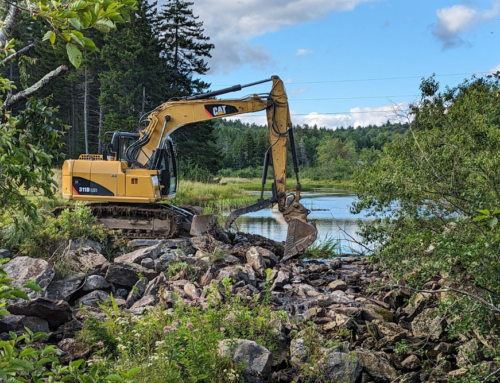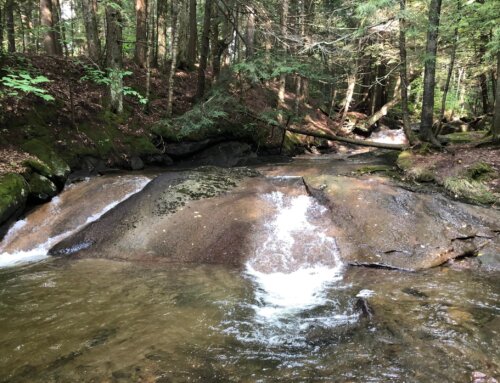November 15, 2011
Comments of Ron Rhodes, River Steward, Connecticut River Watershed Council, before Vermont’s joint House and Senate Natural Resources meeting regarding post-Irene flood response.
Honorable Ladies and Gentlemen,
Thank you for the opportunity to speak here today on Vermont’s post-Irene flood response.
As you may know, the Connecticut River Watershed Council is a membership based non-profit that advocates for the four-state Connecticut River watershed. We work to protect the river, its tributaries, the land, plants, and creatures throughout the entire watershed. As one of four river stewards employed by the Council, my work in Vermont and New Hampshire focuses on regulatory proceedings, permit requests, and development plans affecting the watershed. In addition, I work on state-wide issues with other non-profits such as Trout Unlimited, the Vermont Natural Resources Council, Lake Champlain International and many others.
These organizations came together post-Irene with a common vision and goal. We represent more than 41,000 Vermonters who are members of our various organizations. We are here today on behalf of these members, whom you call constituents.
First let me be clear that we share Commissioner Mears’ sentiments and agree with his statement that “protecting our communities and avoiding future flood damage requires and is dependent upon protecting our river corridors
I believe it is very important for all of us to realize that flood recovery and planning for future floods isn’t about taking sides. This isn’t Roads vs. Rivers. It isn’t even about the fish. The fish will rebound; they always have after flood events here in Vermont.
The issue before us now is how we learn from our history, our experiences, even our mistakes post-Irene in order to be better prepared for the future. How do we recover from decades of risky behavior in road construction practices and flood plain development? How do we reduce the risks to our homes, roads and businesses without undermining our rivers and economy in the process? We all must come together to find solutions because failure to address the current conditions will be catastrophic.
What can we do?
1) New development in the floodplain must be discouraged and properly managed. Making new investments in areas that are prone to flooding is simply unwise. In addition, homeowners currently in the floodplain who are interested in moving should be bought out and their properties returned to its natural state. These incentives are already in place, we just need to take advantage of them.
2) Culvert standards need to be upgraded. The minimum Town Road and Bridge Standards adopted by VTrans only require culverts to be able to pass “Q25,” or a 25-year flow event. This standard only takes high water into account and ignores debris, sediment, ice — everything present during a flood. ANR, by contrast, uses a “1.2x bankfull width” standard which takes into account debris, sediment and ice. This ANR standard requires structures to be at least 1.2 times the natural bankfull width of the stream, which provides roughly twice as much area for passage as the VTrans’ Q25 standard. This is the minimum standard that VTrans should adopt, because it would help reduce plugged culverts, road washouts and millions of dollars in damage.
3) We also must upgrade the river knowledge within VTrans. State staff responsible for road repairs along rivers should be trained in river hydrology. Another option would be to add ANR river engineers to the VTrans teams to help guide responsible in-stream work. Many of the road repairs done post-Irene have created pinch points in our streams. The rock put in to stabilize the roads will not withstand future high water in many cases. Instead of “lightening some of the permit requirements for future road projects” as has been suggested by Ms. Minter, our group and our members would prefer to see the State get smarter about how we fix the roads without causing problem areas and worsening future flooding.
4) The use of Pervious Pavement and Low-Impact Development, both of which help control storm water and have proved to be an effective way of preventing floods and protecting property, must be promoted. Innovative solutions for roads, parking lots, sidewalks etc. are readily available and should be utilized for new development projects.
5) Finally, I would like to suggest that the State designate the last week of August as Vermont Flood Awareness Week. The goal would be to highlight how floods occur, the hazards associated with them, and what Vermonters can do to save life and property. National flood awareness week is in March, but having our own week in August is inspired by Irene and a week that most of us will never forget.
What must we avoid?
More unchecked, unregulated, emergency dredging, graveling and channelizing in an attempt to “fix” the rivers. This is a failed practice of our past, which our rivers and communities are still recovering from. Widespread graveling did not prevent the flood of 1973, and the absence of widespread graveling did not cause the flooding of 2011. Trying to modify and manage our rivers in this way is extremely expensive and not only fails to prevent future flooding but in fact makes it even more destructive. DEC’s current policies must not be diluted in any way, nor suspended as they were immediately following Irene.
I am a firm believer that a healthy environment and healthy economy go hand in hand. If our rivers and surrounding watersheds look like moonscapes due to excessive excavation, large scale wood removal and other destructive practices, we risk losing millions of dollars spent in Vermont every year on outdoor recreation. Also at risk would be the jobs provided by our small businesses that cater to outdoor enthusiasts. Our actions in the weeks and months ahead can ensure that the dollars from these activities continue to flow into Vermont and help boost our economy.
Quotes from Vermonters
“The surprising thing is that each time a flood occurs so many intelligent people take it as an act of God rather than as something that grew out of their own acts (or perhaps of their fathers’) and fail to see that it could have been anticipated and much of the damage prevented.” Allen Hazen, Hartford, VT in his 1930 book entitled Flood Flows.
“The actions taken to ‘fix’ our rivers and streams post-Irene will have dire consequences for anyone living downstream from the ‘fixed’ reaches. I stridently urge wisdom and caution as we rebuild, taking into consideration not just flood waters but also the massive amounts of sediment, rocks, branches and other debris they carry as they surge toward too-small culverts and narrow bridge crossings.” Kelly Stettner, who lives on the banks of the Black River in Springfield with her husband and kids.
“In 2001 we took land out of production to plant a buffer along the river. Without those trees our farm would have been devastated. Sure, we lost all our crops after Irene but our land is still intact and will be ready to replant next spring.” Hurricane Flats Farm, South Royalton, which lost roughly $40,000 worth of organic vegetables and farm equipment.
“Being one of the furthest downstream flooded properties on the Winooski River, we are distressed that work being done upstream in hopes of protecting certain areas will only make the downstream flooding worse in the future.” Frank and Leslie Johnson of Richmond, who are living in a rented apartment with their 3 children while their home is being made livable again.
“Even though my house is not in the floodplain, my downstairs was flooded by Irene. But it can be rebuilt thanks to flood insurance. However, my favorite fishing spots will take much longer to recover from the big, yellow machines. Fish can survive floods, but not if every excavator and backhoe in the state are in our rivers and brooks pulling out all the gravel, boulders and trees.” Shay Berry, Sharon, whose house sits above the White River near Broad Brook.







